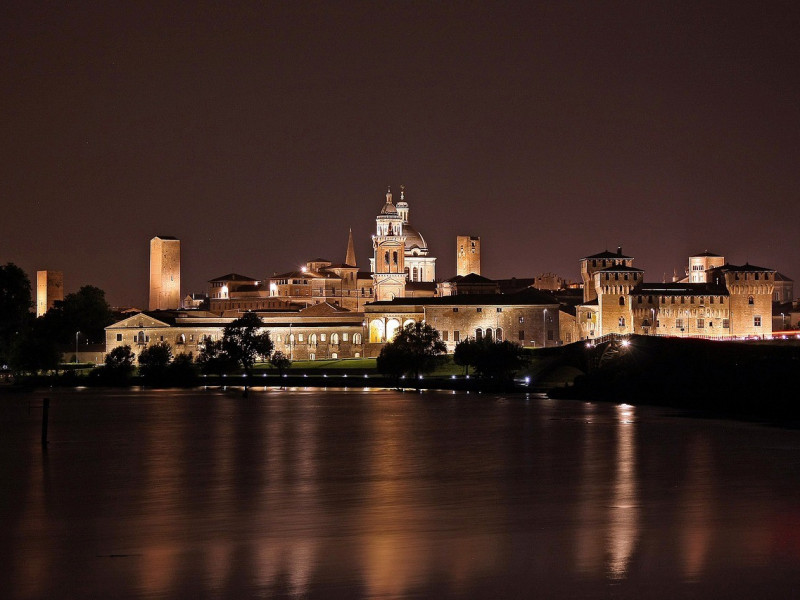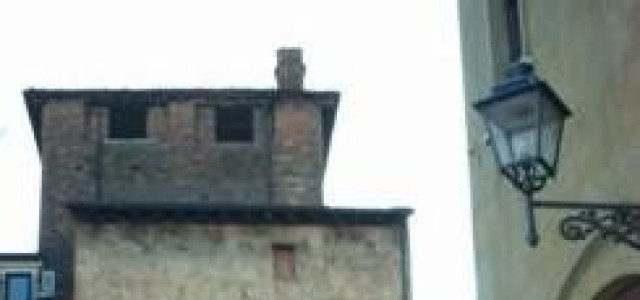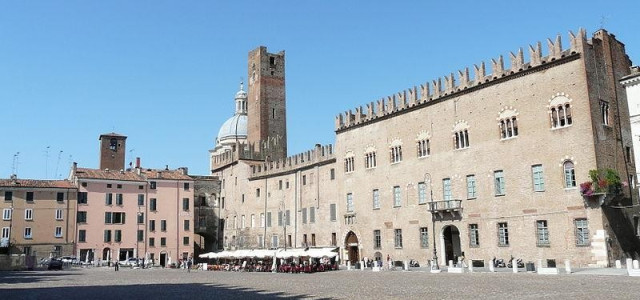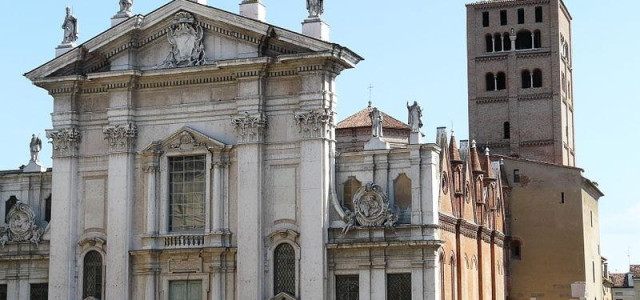Mantova (Sito UNESCO)
Italian Capital of Culture 2016, since July 2008 the city of art of Mantua has been included in UNESCO list of World Heritage Sites, with Sabbioneta, another Lombard city united by the legacy of Gonzaga family, which has made it two of the main centers of Italian and European Renaissance. Mantua is a city intended as a "widespread urban museum", with more than 1,000 digitized works, 40 virtual exhibitions set up in 8 different virtual museums; furthermore, as reported in Legambiente report "Ecosistema Urbano 2017", the city ranked first among the best Italian cities for the quality of the environment and life. Mantua is accessible through the scenic Ponte San Giorgio, an integral part of the urban defensive military system that includes San Giorgiol Castle, at the behest of Gonzaga court: initially in wood, it was built in masonry by Ludovico Gonzaga at the end of the XIV century, dividing Middle Lake from Lower Lake. The historic center of the city contains some of the most beautiful architecture in northern Italy: dedicated to St. Peter's, Cathedral in Romanesque style was built between 1395 and 1401; as for the palaces, it is perhaps more correct to speak of "city-palaces", starting from Palazzo Ducale, architectural complex consisting of numerous buildings connected by corridors and galleries, and enriched by internal courtyards, some hanging walls and vast gardens. Inside, the palace houses the famous "Camera degli Sposi" frescoed by Mantegna. Palazzo Te is a work by Giulio Romano, who commissioned it in 1525 on the commission of Marquis Federico II Gonzaga for his entertainment: "Palace of lucid deceptions" stood in fact in the middle of an island rich in woods, mysterious, loaded of symbols and myths that culminate in the famous Sala dei Giganti. Andrea Mantegna's Home and Rigoletto's Home, protagonist of the story played by Giuseppe Verdi, are worth a visit. Equally fascinating, the system of ancient Peschiere, also called Loggia di Giulio Romano, named after the mannerist architect who designed them.






